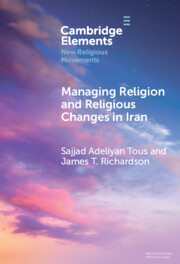Element contents
Managing Religion and Religious Changes in Iran
Published online by Cambridge University Press: 07 June 2024
Summary
Keywords
- Type
- Element
- Information
- Online ISBN: 9781009460095Publisher: Cambridge University PressPrint publication: 13 June 2024
References
- 3
- Cited by

